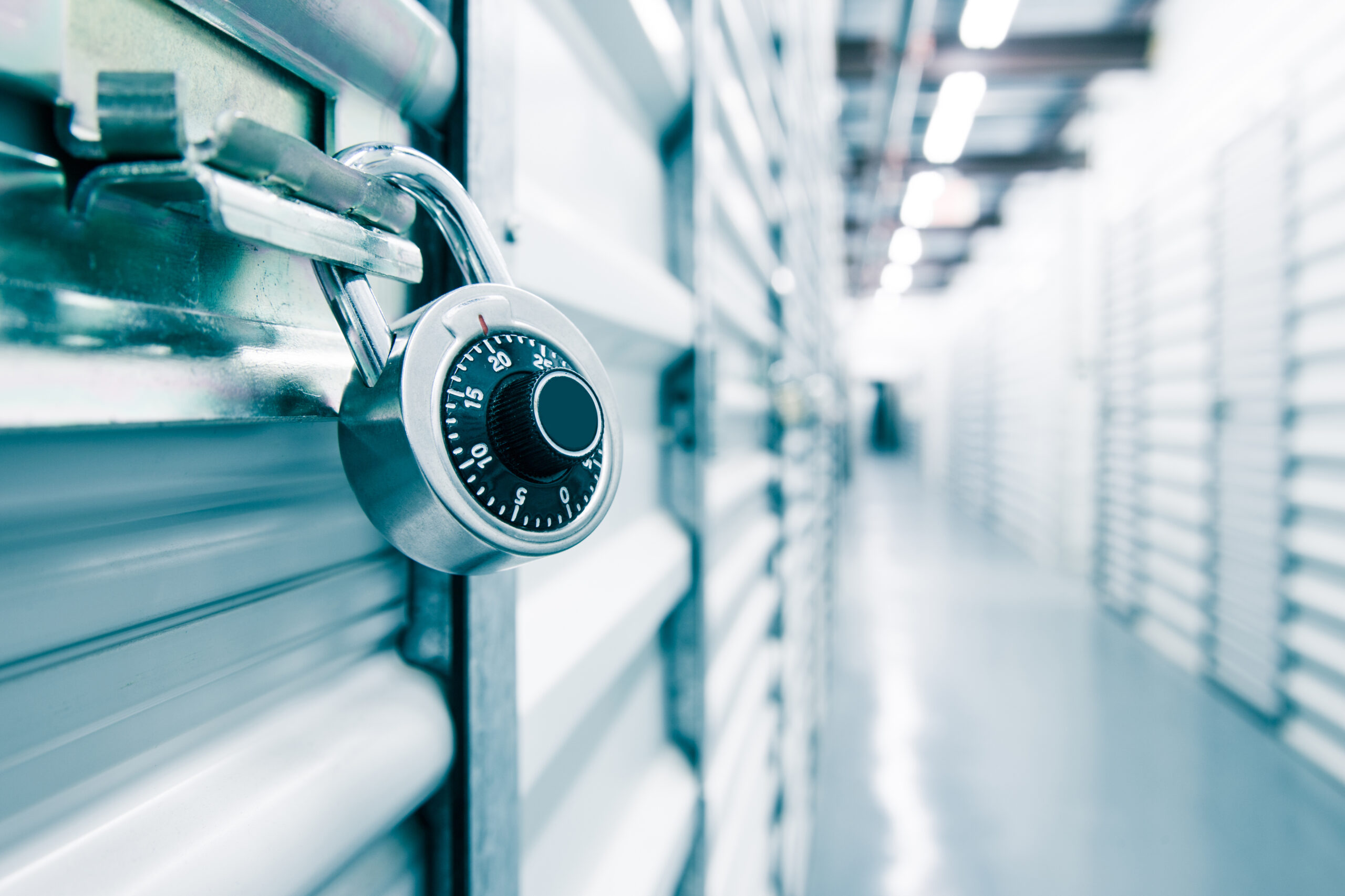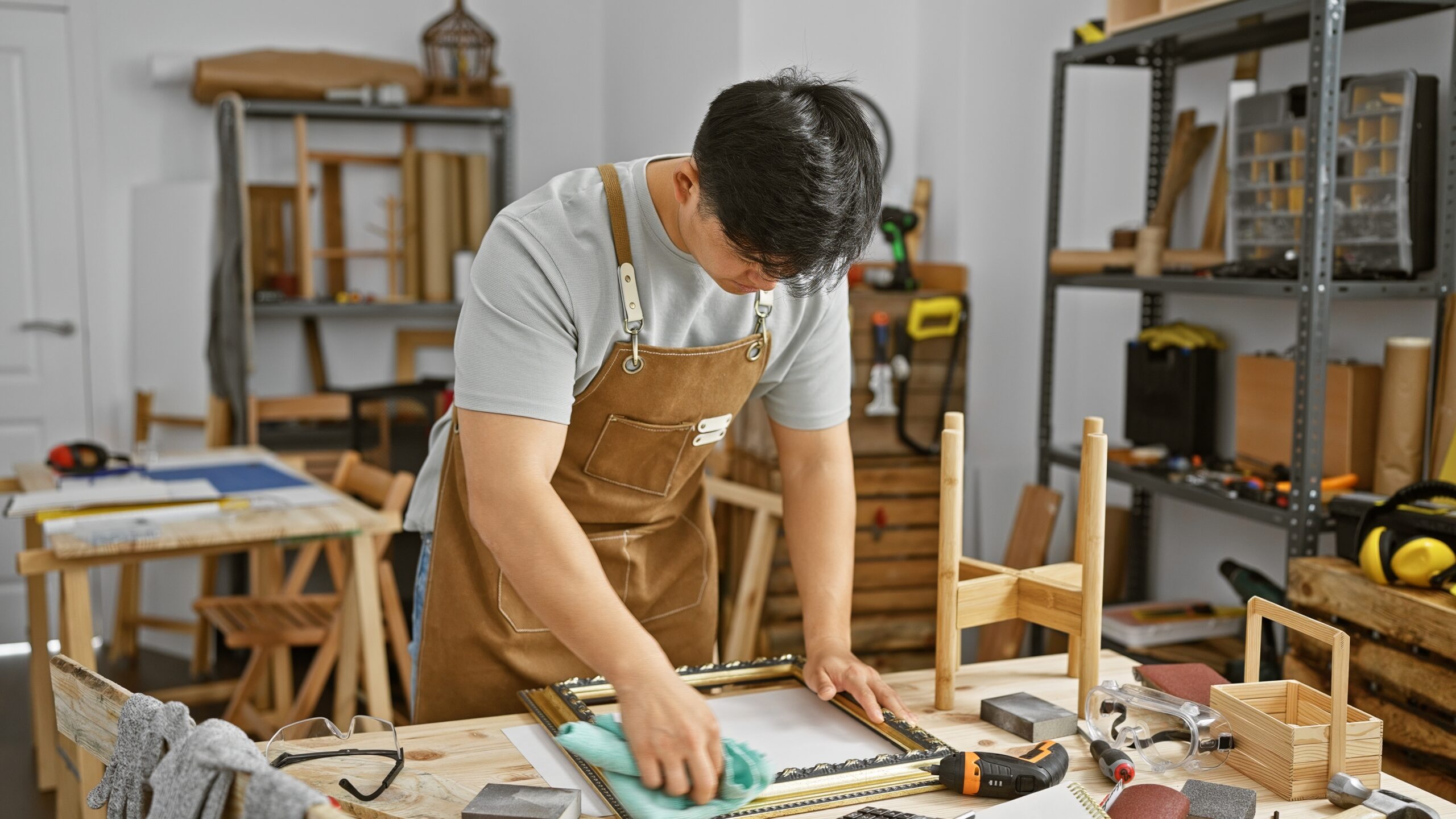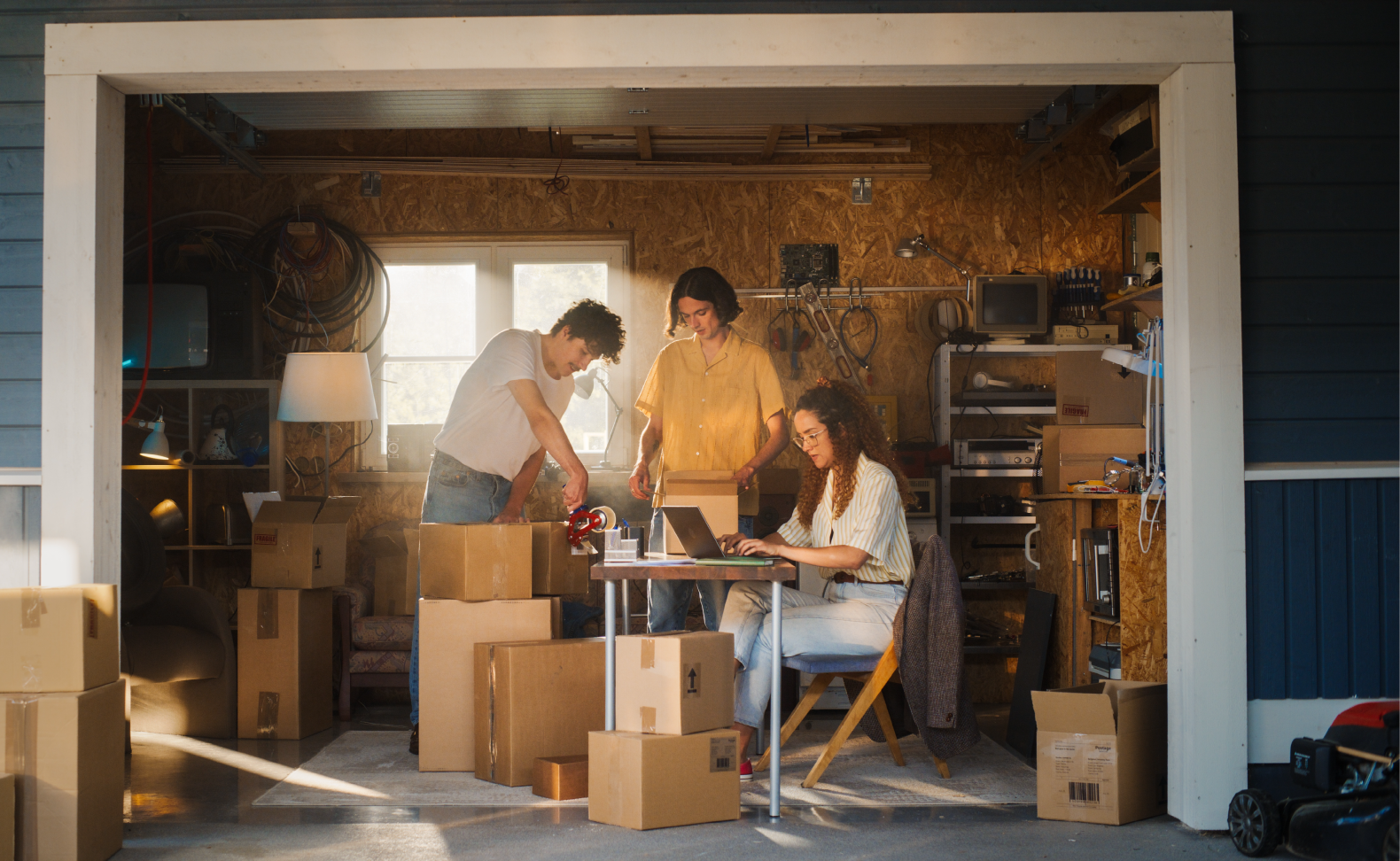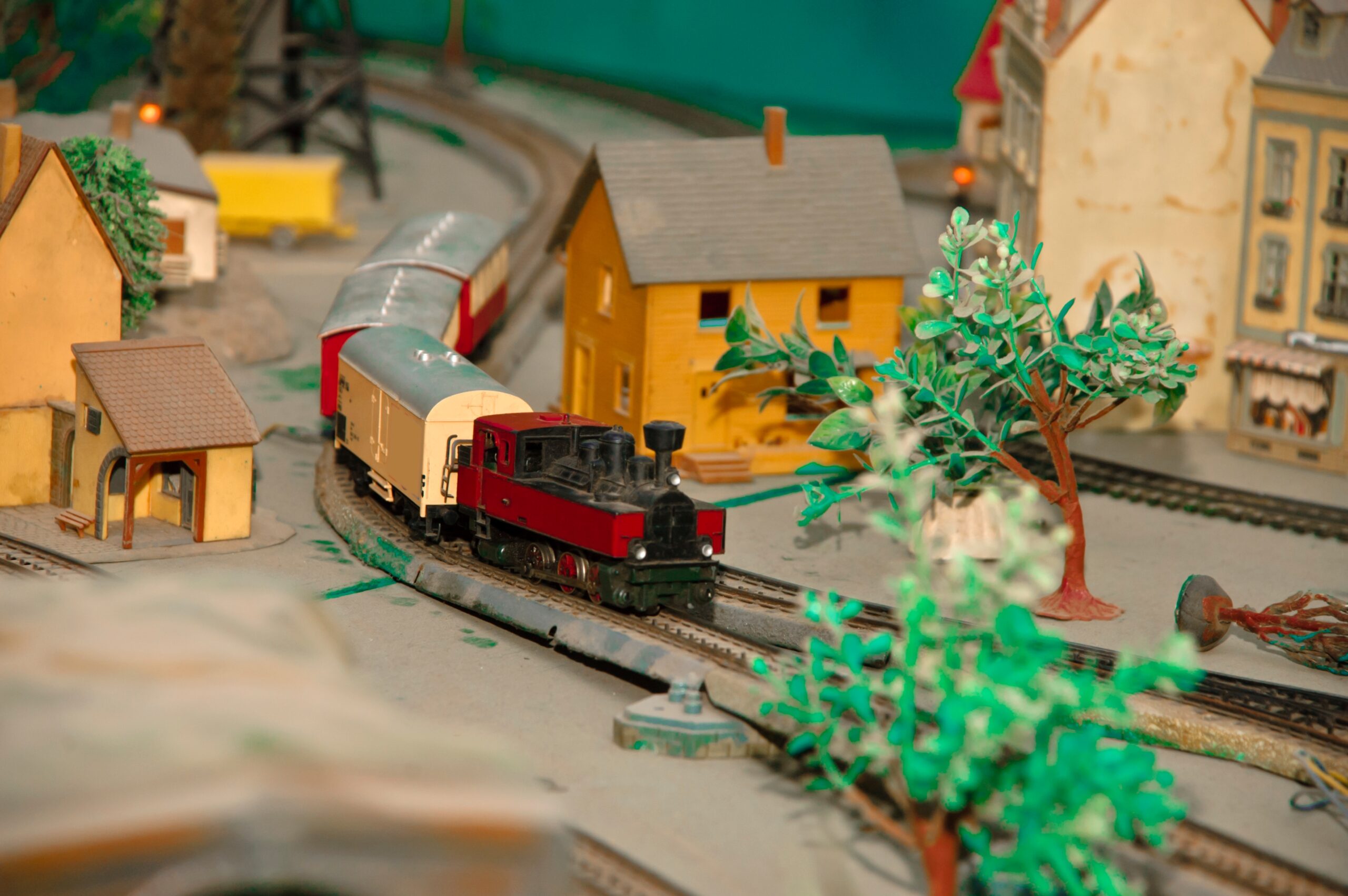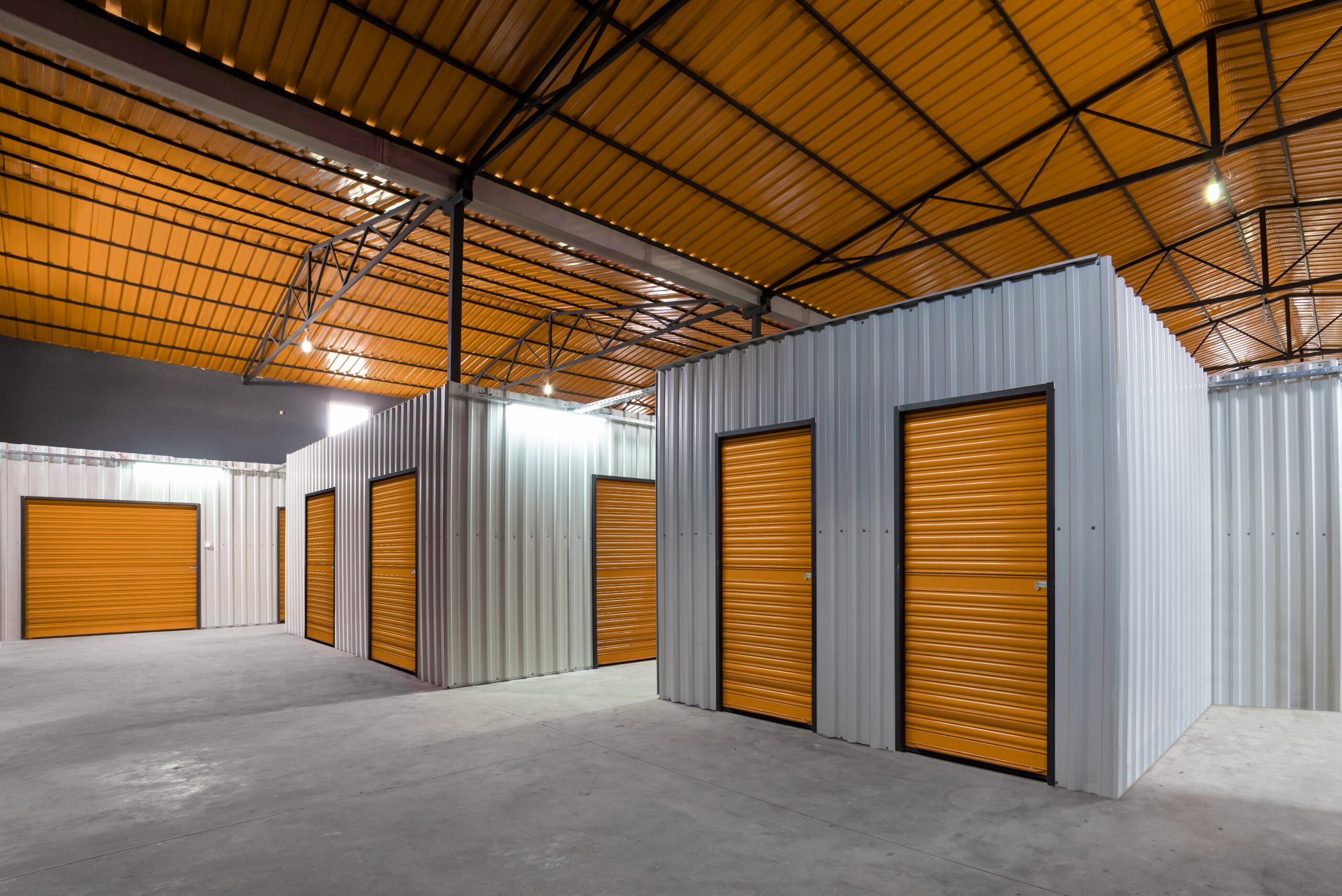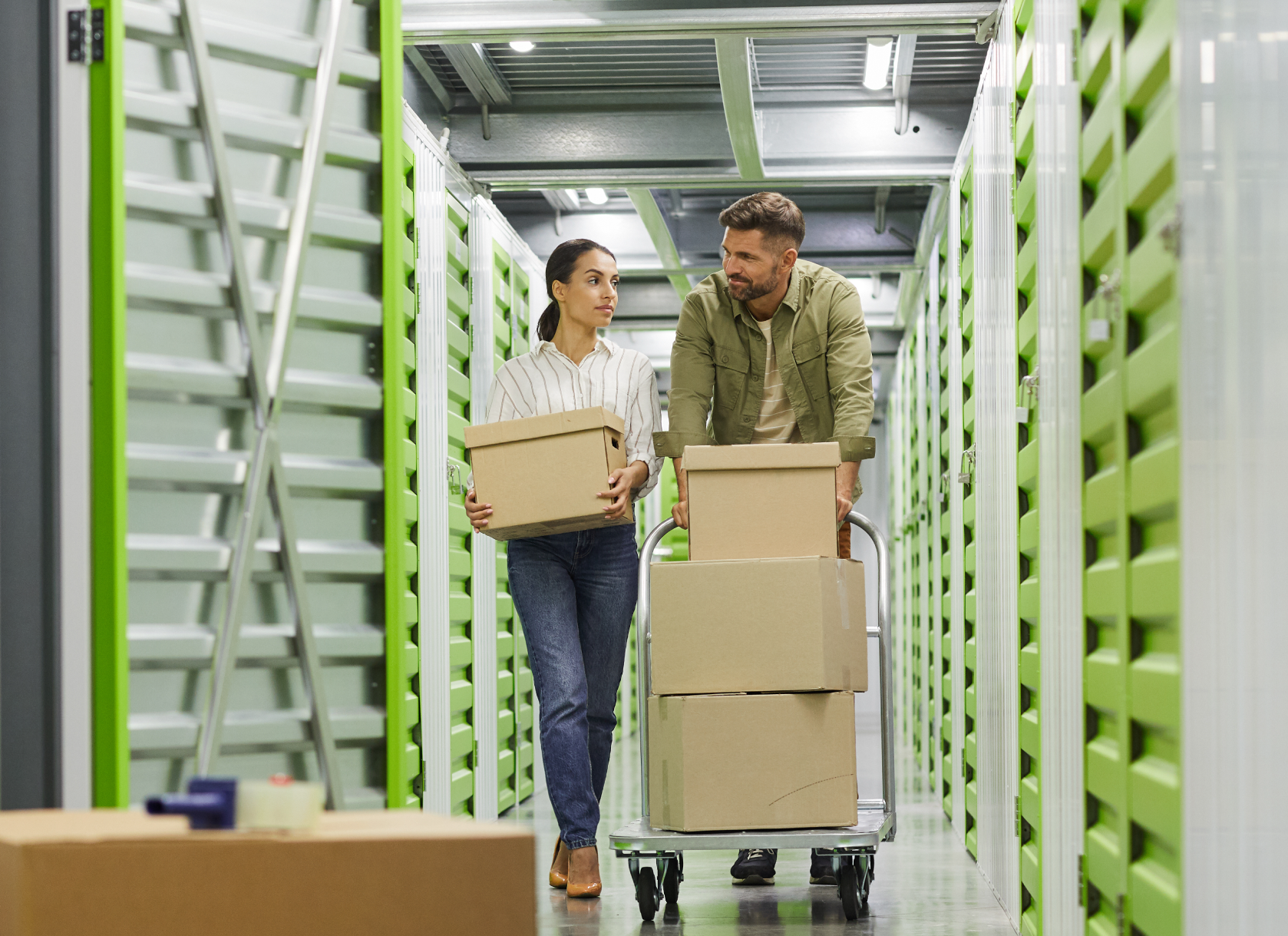Article takeaways
- It’s easy to maximize storage unit security by choosing the right lock, documenting your belongings, and packing them strategically.
- Choosing a storage facility in a secure location with high-quality security features will help keep your belongings safe.
- Regularly check in on your unit and consider purchasing a storage insurance policy if anything is damaged or missing.
Self-storage units are some of the most secure ways available to keep your belongings safe while moving or maximizing space in your home. However, not every unit is immune to break-ins, and an improperly secured unit increases the risk of unwanted intruders. Storage.com is committed to helping you find a secure storage solution with a minimum of fuss, so we’ve compiled 10 important tips to help keep your belongings safe while in storage.
From choosing the right lock to finding a facility with upgraded security features, there’s plenty to consider when security is a priority. Let’s go over some of the most important tips we know to give you peace of mind when renting a self-storage unit.
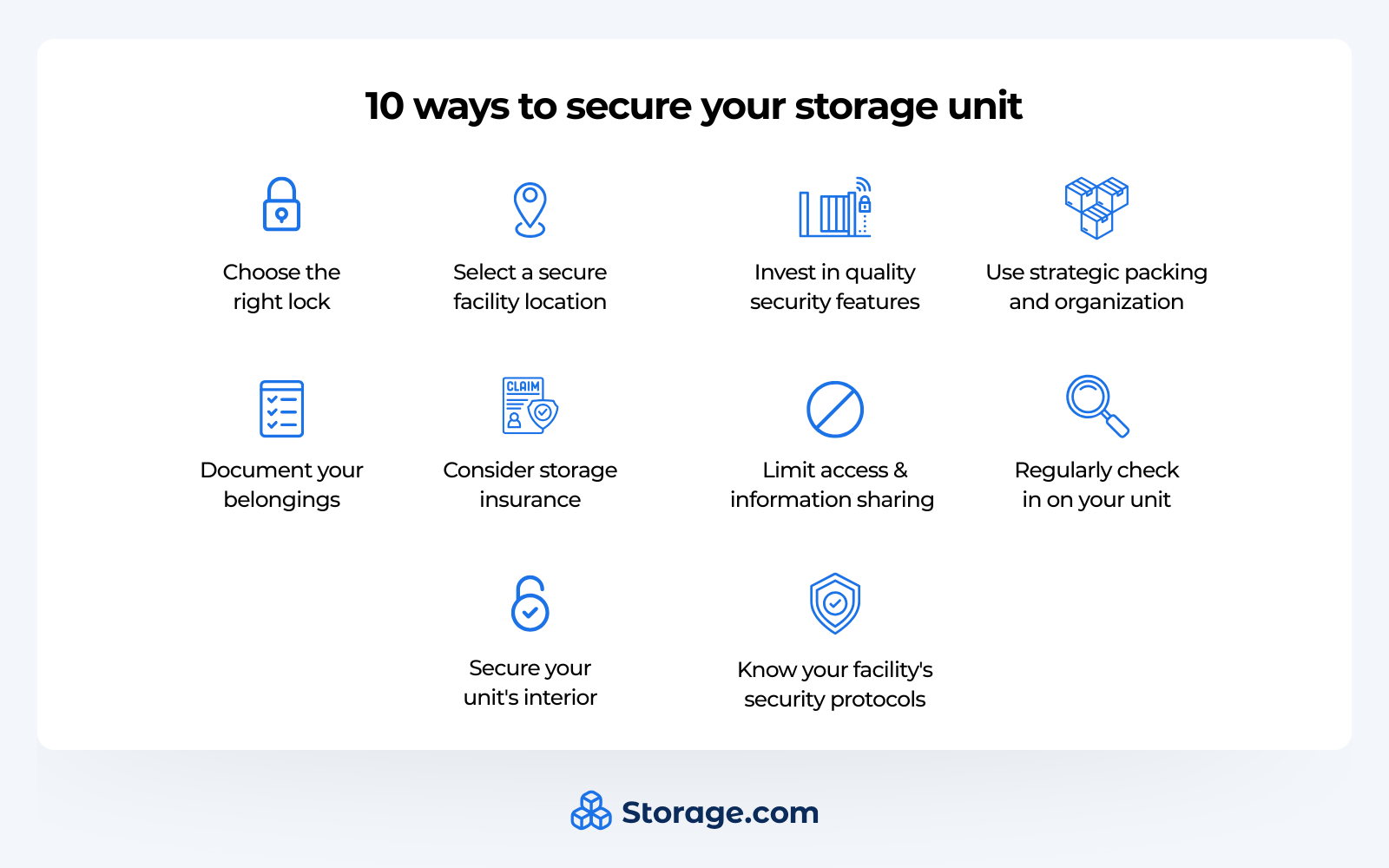
1. Choose the right lock for your storage unit
Not all storage facilities are created with equal security measures, so your first order of business should be researching what kind of locks the facility has on hand. Some facilities will have cylinder locks, which are built into the facility doors and are some of the most secure options available, but other facilities will provide a separate lock for you. However, many of these locks aren’t as secure as options you may be able to find on your own, especially if they’re padlocks, which could theoretically be broken with bolt cutters.
Storage.com recommends providing your own disc lock if your unit’s door doesn’t have a built-in cylinder lock. Disc locks are similar to padlocks and are opened with keys, but are built such that the lock doesn’t give much leverage for a bolt cutter to break through it. These locks are also far more difficult to pick than padlocks, thanks to their disc tumblers, even more so if you’re willing to invest in a high-quality lock. Bringing a lock also removes the risk of an unscrupulous facility manager using a master key to get into units.
2. Select a secure facility location
As a rule of thumb, indoor self-storage facilities will usually be more secure than outdoor facilities. However, whatever you choose, you can maximize your unit’s security by choosing a unit in a well-lit area (allowing unit security can more easily see any potential intruders) and avoiding units near the perimeter of the facility (as they require less effort to access by potential thieves willing to hop the fence). Units closer to the main entrance and office are also easier for security to monitor.
Choosing an indoor storage facility adds an extra barrier for those looking to break in, as they’re well-lit throughout and have an entire building surrounding their units. However, for maximum peace of mind, choose a unit on an upper floor, as these are far more difficult to access in the event of a security failure.
3. Invest in quality security features
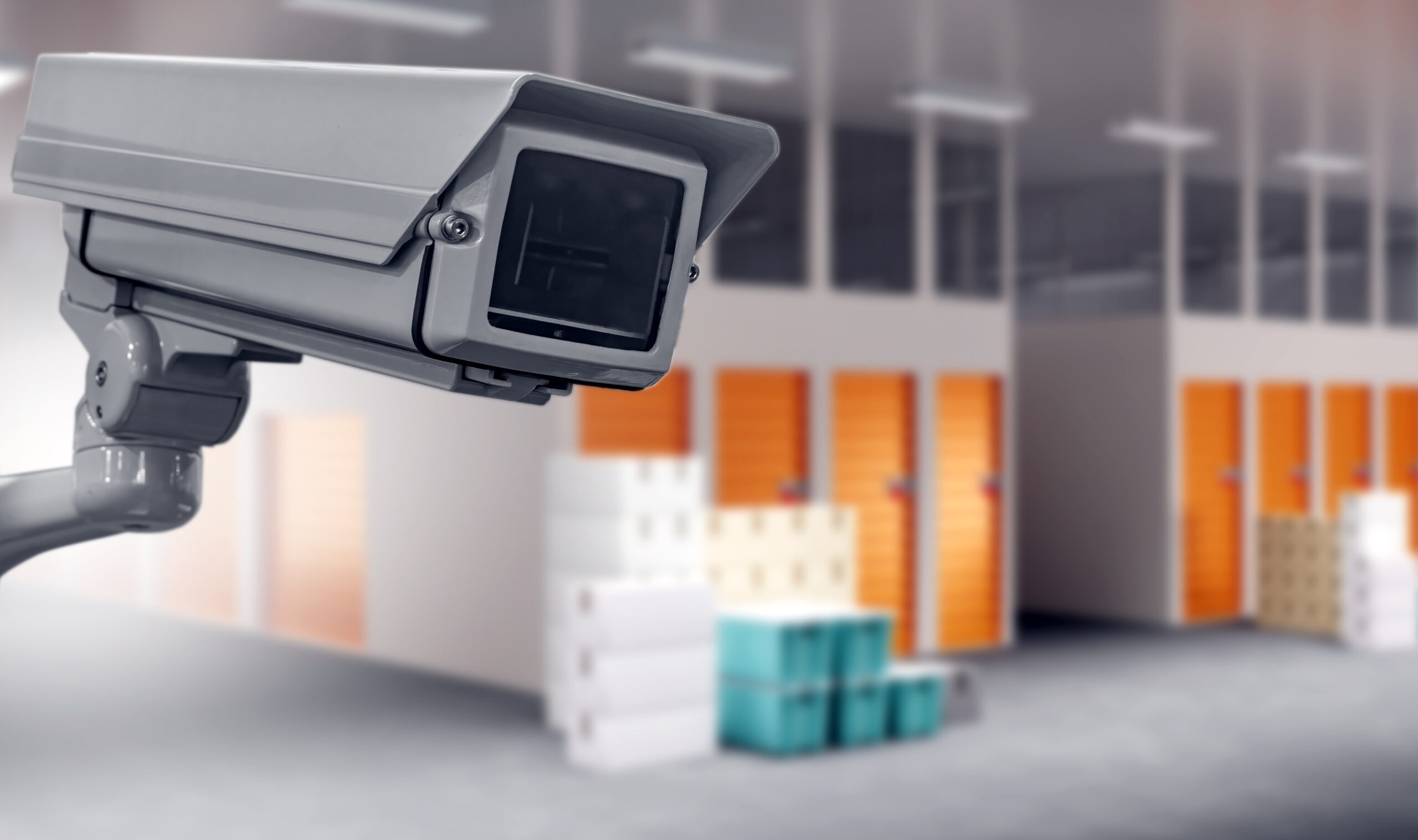
You don’t have to worry about unit security all on your own; many facilities have built-in security features to protect your valuable belongings. Here are a few important ones worth seeking out.
- Gated or locked entry to the facility. A good self-storage facility’s first line of defense will be a strong gate or locked front door to restrict access to renters and employees. Higher-end facilities will have more advanced locking systems, such as biometric locks that are coded to a renter’s fingerprint.
- High-quality locks on units. Facilities that make security a primary concern will have strong built-in cylinder locks on their storage unit doors. More advanced facilities may have smart locks that you can access with a code or biometrics.
- On-site security staff. For maximum security, choose a self-storage facility with a dedicated team of security professionals that makes regular patrols and monitors the security systems 24/7.
- Cameras and lighting. A well-lit facility will be easier to detect intruders in, and a thorough network of security cameras will cover every possible angle of the facility and avoid any blind spots.
Research the facilities you’re considering using our search tool to see what security is available and whether they provide their services during business hours or 24/7. Be ready to pay a little extra for these features, but you’ll find them worth the price if you’re concerned with security.
4. Use strategic packing and organization
If someone manages to bypass security and get into your unit, there are plenty of measures to take when packing and organizing to keep your valuables safe. Store your valuables toward the back of the unit and store less valuable items in front of them to keep attention off of them. Keeping “decoy” items near the front will further protect your valuables, as time is a concern for most intruders, and they’ll most likely want to grab whatever is easiest before they flee the scene.
You can further protect your belongings by storing them in opaque containers such as moving boxes or plastic tubs; bins made of translucent materials are easier for intruders to see the contents of. Lastly, labeling your boxes will help you organize them and remember what’s stored in each, but avoid leaving boxes labeled with valuables, as an intruder may use those labels to identify which containers to rummage through.
5. Document your belongings
Keeping lists and photos of what you’ve stored in your unit not only helps you organize, it can be useful if your belongings are broken or stolen and you need to file an insurance claim. Take plenty of photos of the items you plan on storing and keep them on hand in case you need them, and make a detailed list of the contents of your unit to check against regularly.
For valuable items, electronics, and appliances, make sure you write down the serial number and a description of each when making your list in case you need to file a warranty claim with the manufacturer. You should also get an accurate value of each item in case you need to file an insurance claim for reimbursement.
Sample Self Storage Inventory
| Item | Serial number | Qty. | Condition | Value |
|---|---|---|---|---|
| PlayStation 5 console w/disc drive and cords | XXXXXXX | 1 | Clean, undamaged, working | $1,000 (factoring in additional hard drive and onboard games) |
6. Consider storage insurance
Speaking of insurance, it may be worth investing in specific storage unit insurance if your homeowner’s or renter’s insurance policy doesn’t cover items stored outside of your home or apartment. Some facilities have insurance options available for renters, but these typically cover a smaller amount and cost more than third-party options, so it’s worth researching what’s available before committing to the policy offered by your facility of choice.
Storage insurance policies cover theft, vandalism, and weather-related damage, but typically don’t cover mold or mildew damage, as these are considered the fault of the customer rather than an external source. Before investing in a policy, it’s worth getting a monthly quote and deciding whether the cost outweighs the peace of mind you’ll have knowing your valuable items are covered.
7. Limit access and information sharing
Another simple way to ensure your storage unit is kept private and secure is to limit the information you share about it. Don’t publicly share your storage unit number, and make sure keys and access codes are only shared with friends and family you trust to help keep your belongings safe.
While facility staff should be trustworthy, it’s best practice to refrain from discussing what valuables you may be storing with them so unscrupulous employees aren’t tempted to get into your unit. Finally, limit what you share on social media about your unit, as modern criminals and intruders will be looking for that information to identify easy targets for theft.
8. Regularly check in on your unit
Regular visits to your storage unit not only improve your peace of mind, but you can also use your regular check-ins to look for signs of tampering and make sure your valuable possessions are clean and free of damage. When visiting your unit, you can reorganize your belongings to keep potential intruders guessing, and occasionally change out the locks and access codes to improve security over time. You should also maintain a positive relationship with facility staff so they know their efforts to protect your unit are appreciated.
9. Secure your unit’s interior
For maximum peace of mind, consider investing in additional security measures within your unit, such as extra locks for storage cabinets and boxes. Weighing down and anchoring your most valuable items will make them more difficult to take without extra effort, deterring smash-and-grab thieves and making it easier for unit security to catch more dedicated criminals.
You can also bring your alarm system to further deter thieves, alerting security and making a disorienting loud noise to throw them off. Incorporating multiple layers of security within your storage unit will be the best practice for keeping intruders away.
10. Know your facility’s security protocols
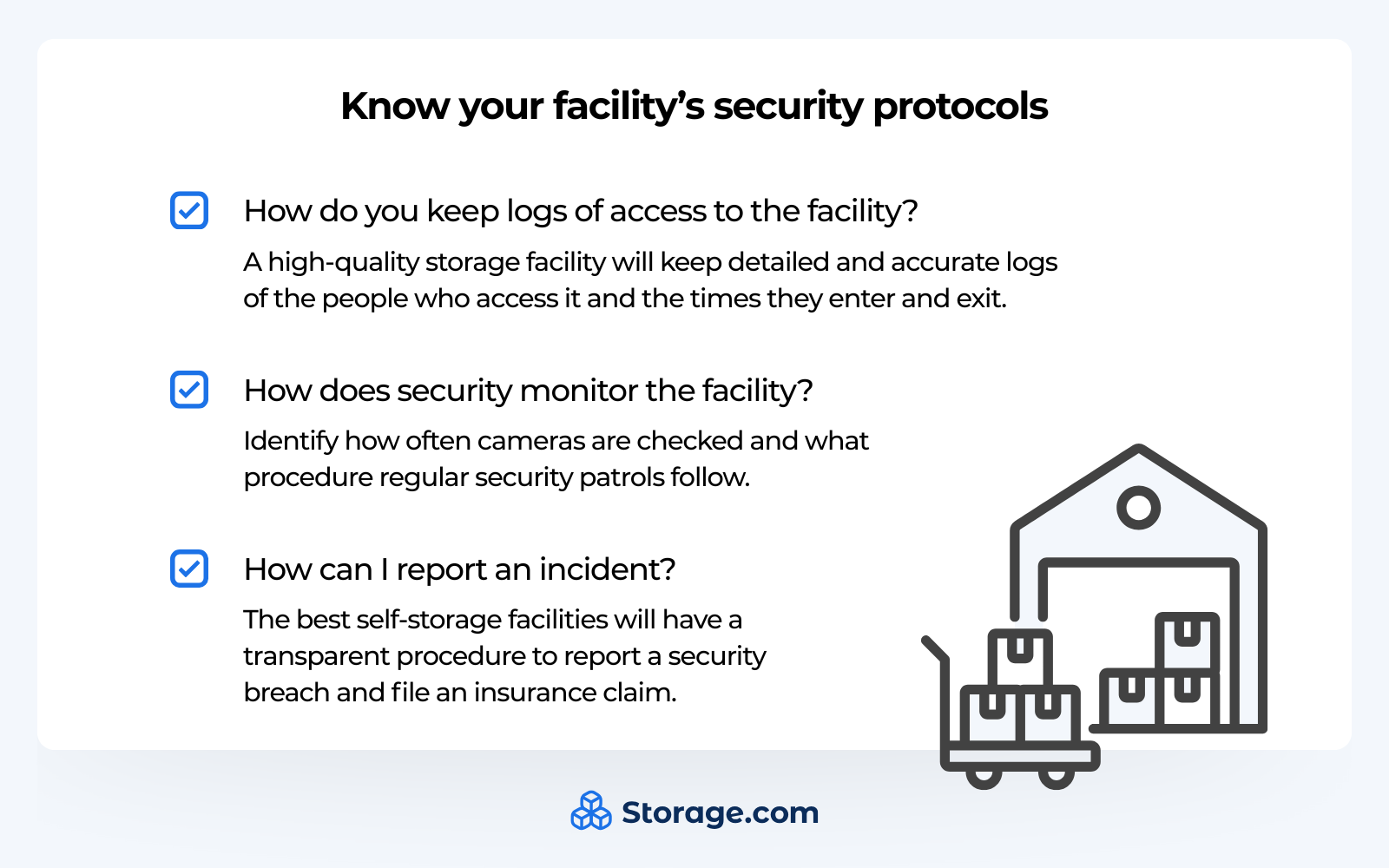
When renting a storage unit, take extra time to ask about and review the facility’s security protocols so you and the management are on the same page. Here are a few questions to bring with you when meeting with management.
- How do you keep logs of access to the facility? A high-quality storage facility will keep detailed and accurate logs of the people who access it and the times they enter and exit.
- How does security monitor the facility? Identify how often cameras are checked and what procedure regular security patrols follow.
- How can I report an incident? The best self-storage facilities will have a transparent procedure for you to report a security breach and file an insurance claim, even if their security is top-of-the-line.
Some facilities will ask you to write down an alternate contact in case they can’t get ahold of you in the event of a security incident or other issue. Be sure the contact you choose is trustworthy and won’t take advantage of any access you give them to your unit.
Wrapping up: Find a secure self-storage facility near you
A good self-storage facility will provide plenty of built-in security and be deserving of your trust in their staff and technology. However, for maximum security and peace of mind, it’s worth investing in good locks, insurance policies, and extra layers of locks and security within your storage unit. With our tips in mind, find the right balance of security and accessibility to ensure you can get into and organize your unit easily without worrying about other people gaining unauthorized access.
If you’re seeking out the most secure self-storage facility to meet your needs, look no further than Storage.com’s unit search tool to help you compare facilities near you and find the features you require. Or give us a call at (833) 389-5401 to speak to a storage expert and get personalized assistance finding a solution just for you.
